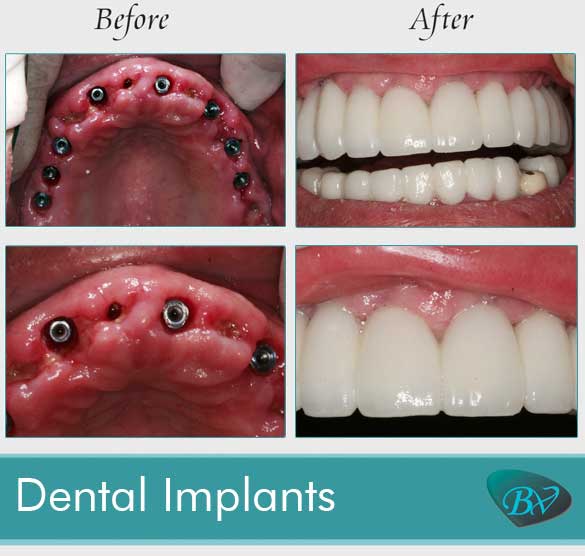The Best Guide To Dental Sense
The Best Guide To Dental Sense
Blog Article
Dental Sense for Dummies
Table of Contents8 Simple Techniques For Dental SenseDental Sense for BeginnersThe Ultimate Guide To Dental SenseSome Known Questions About Dental Sense.
are medical tools operatively dental implanted into the jaw to restore an individual's capability to eat or their appearance. They provide assistance for man-made (fake) teeth, such as crowns, bridges, or dentures. When a tooth is shed because of injury or condition, a person can experience issues such as rapid bone loss, faulty speech, or modifications to eating patterns that cause pain.Dental dental implant systems include a dental implant body and oral implant joint and might additionally consist of a joint addiction screw. Dental implant vs bridge. The oral implant body is operatively inserted in the jawbone instead of the tooth's origin. The oral implant abutment is usually affixed to the dental implant body by the joint addiction screw and expands via gum tissues into the mouth to sustain the affixed man-made teeth
(https://www.intensedebate.com/people/dentalsense1)Structure of The Dental Implant System choosing dental implants, talk with your dental provider about the potential advantages and risks, and whether you are a prospect for the procedure. Points to think about: Your overall health and wellness is an essential consider establishing whether you are a good candidate for dental implants, exactly how long it will certainly require to recover, and for how long the dental implant might remain in area.
Smoking cigarettes may affect the recovery procedure and decrease the long-lasting success of the implant. The healing procedure for the dental implant body might take a number of months or longer, during which time you usually have a temporary joint instead of the tooth. the dental implant treatment: Very carefully comply with the oral health guidelines offered to you by your dental supplier.
The Facts About Dental Sense Revealed
Implant failing can result in the requirement for one more medical treatment to take care of or change the dental implant system. Brings back the capability to chew Restores aesthetic appearance Aids keep the jawbone from diminishing as a result of bone loss Maintains the health of the bordering bone and gum tissues Helps maintain surrounding (nearby) teeth secure Boosts high quality of life Damages to surrounding natural teeth during implant positioning Injury to the surrounding tissues throughout surgery, such as sinus opening Injury throughout surgery (for instance, crack of bordering jawbone) Inadequate function, such as really feeling like the teeth do not bite with each other usually An experience that the tooth is loose or twisting in location arising from an abutment screw loosening Implant body failure (looseness of the dental implant body) due to systemic infection, which may be most likely in patients with unrestrained diabetes due to local infection in bone and periodontals supporting the dental implant body due to delayed healing, which may be more probable in people that smoke Difficulty cleaning up the periodontals around the dental implant, causing inadequate dental hygiene Unattended periodontal condition Post-surgical pins and needles because of nerve impingement or damages Constantly inform healthcare providers and imaging professionals that you have dental implants prior to any type of magnetic vibration imaging (MRI) or x-ray treatments.
FDA is not knowledgeable about any type of damaging occasions reported for MRI or x-ray treatments with oral implants. Oral implants systems are usually made from materials that adhere to worldwide agreement criteria of the International Company for Standardization (ISO) or ASTM International. These criteria have information of what makes a risk-free product.

An oral implant is a structure that replaces a missing out on tooth. With screw-like tools, the doctor inserts a dental implant right into the jawbone, and it functions as an anchor for a fabricated tooth, called a crown. A gadget called a joint links the artificial tooth to the oral implant. The crown is tailor-made to fit the individual's mouth and match the color of their teeth.
Little Known Questions About Dental Sense.
Some people are not qualified for oral implant surgical procedure. It is for oral surgeons to operate on people with: severe illnessuncontrollable metabolic diseasebone or soft cells illness or infectionIf these concerns are dealt with, an individual can have the surgical procedure. In, dental surgeons refrain from operating individuals with: If people with any of the above undertake dental implant surgical treatment, there is a greater threat of the implant failing.

Oral implant surgery is a customized process. Provide you time to heal. Attach the blog post and last crown, bridge or denture.
Next, your cosmetic surgeon will meticulously put the oral implant into your jaw. Ultimately, your doctor will rearrange your periodontals and close the incision with stitches. If your implant is near the front of your mouth, your dentist will certainly make a short-term tooth for you to wear up until you heal. In this way, you will not have a void in your smile while you recover.
The 7-Second Trick For Dental Sense
Your copyright can tell you what to expect in your circumstance. During the healing stage, your jawbone ought to fuse to the dental implant. This process, called osseointegration, is crucial for security and lasting success. This procedure can take anywhere from 3 to 9 months. In many cases, it might take much longer.
Once your dental implant heals, your dentist can connect the joint (small port article) and your last repair (crown, bridge or denture). This typically takes about one hour to finish and may call for a 2nd small surgical treatment. You shouldn't feel any discomfort during your oral implant treatment because your provider will certainly make use of medication to have a peek at this site numb your periodontals.
Report this page